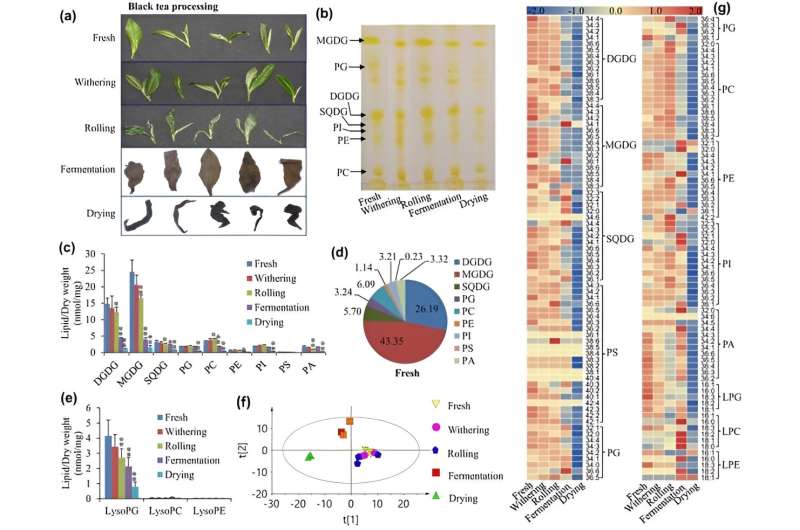This article has been reviewed according to Science X's editorial process and policies. Editors have highlighted the following attributes while ensuring the content's credibility:
fact-checked
peer-reviewed publication
proofread
From leaf to cup: Decoding the biochemical dance of black tea's fragrance

The journey from tea leaf to infusion is a complex one, with a multitude of factors influencing the final taste and aroma. Despite its importance, the precise biochemical mechanisms at play have been shrouded in mystery. Addressing this knowledge gap is essential to harness the full potential of tea's flavor, an attribute vital to its global popularity and economic impact.
In a study published in Horticulture Research
on January 30, 2024, a collaborative effort between Henan University of Technology and Anhui Agricultural University has shed new light on the molecular mechanisms of black tea processing. Utilizing advanced lipidomics, hormone profiling, and transcriptome analysis, the research provides a detailed account of the biosynthetic pathway of methyl jasmonate (MeJA) in tea leaves. The study's meticulous examination of
Dr. Gaoyang Zhang, the principal investigator and a leading authority in tea science, states, "Our findings have the potential to transform tea cultivation and processing. By targeting the CsLOX6 gene, we can now contemplate crafting black teas with bespoke aromas, aligning with consumer tastes and elevating the quality of tea products."
The research opens up exciting avenues for the agricultural and flavor chemistry sectors. With the ability to modulate the CsLOX6 gene, the customization of black tea's aromatic signature becomes a reality, allowing producers to meet the varied demands of the market.
This scientific advancement may also lead to the development of superior tea varieties, enriching the sensory experience of tea drinking and bolstering the profitability of the tea market.
More information: Gaoyang Zhang et al, Lipidomics, transcription analysis, and hormone profiling unveil the role of CsLOX6 in MeJA biosynthesis during black tea processing, Horticulture Research (2024). DOI: 10.1093/hr/uhae032
Journal information: Horticulture Research
Provided by TranSpread




















